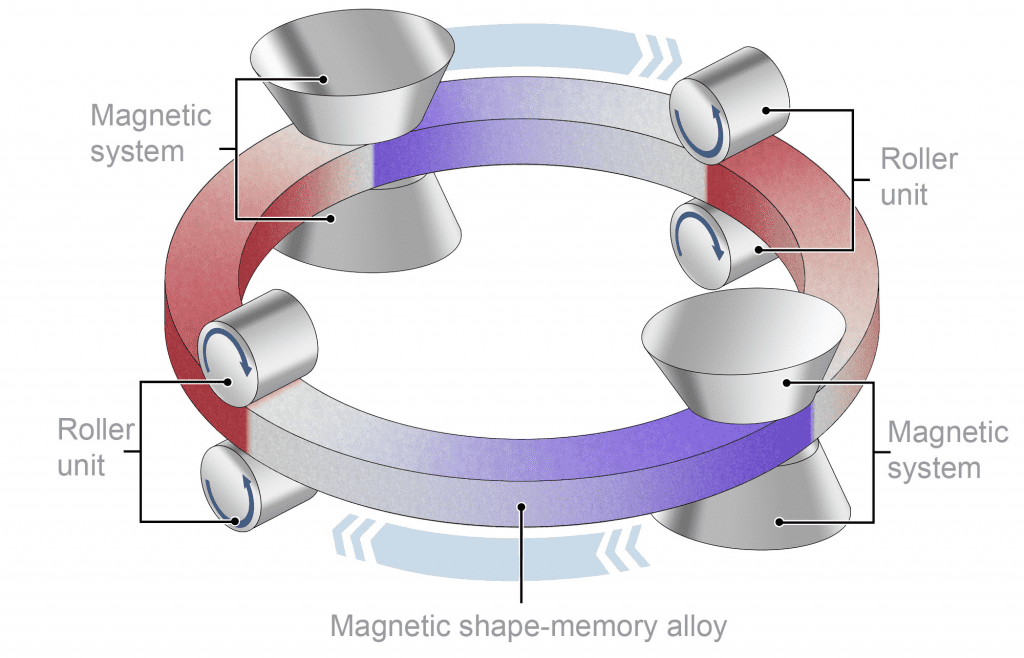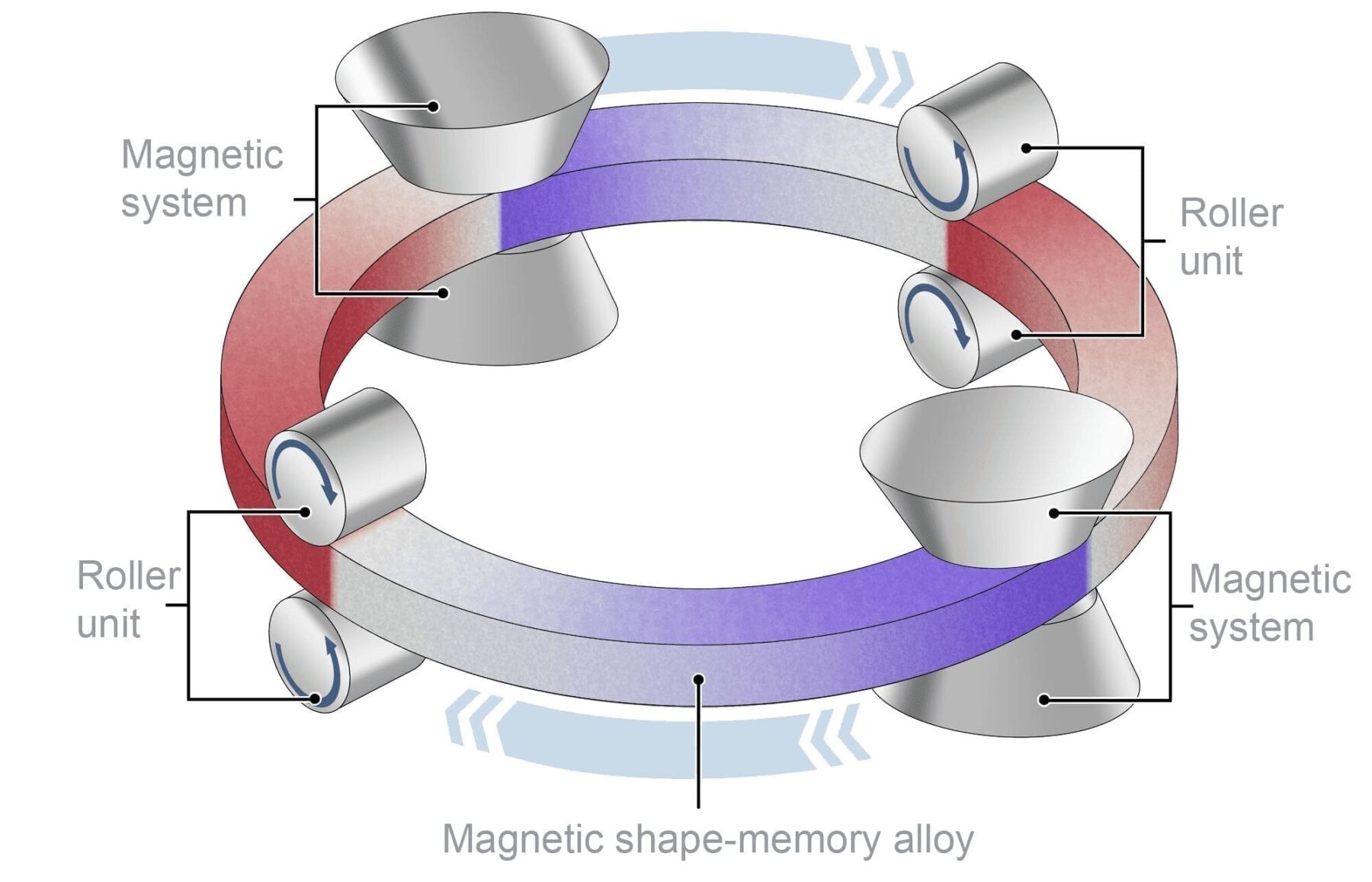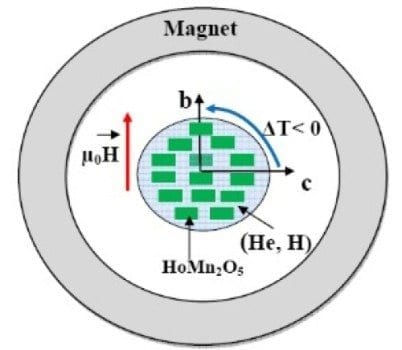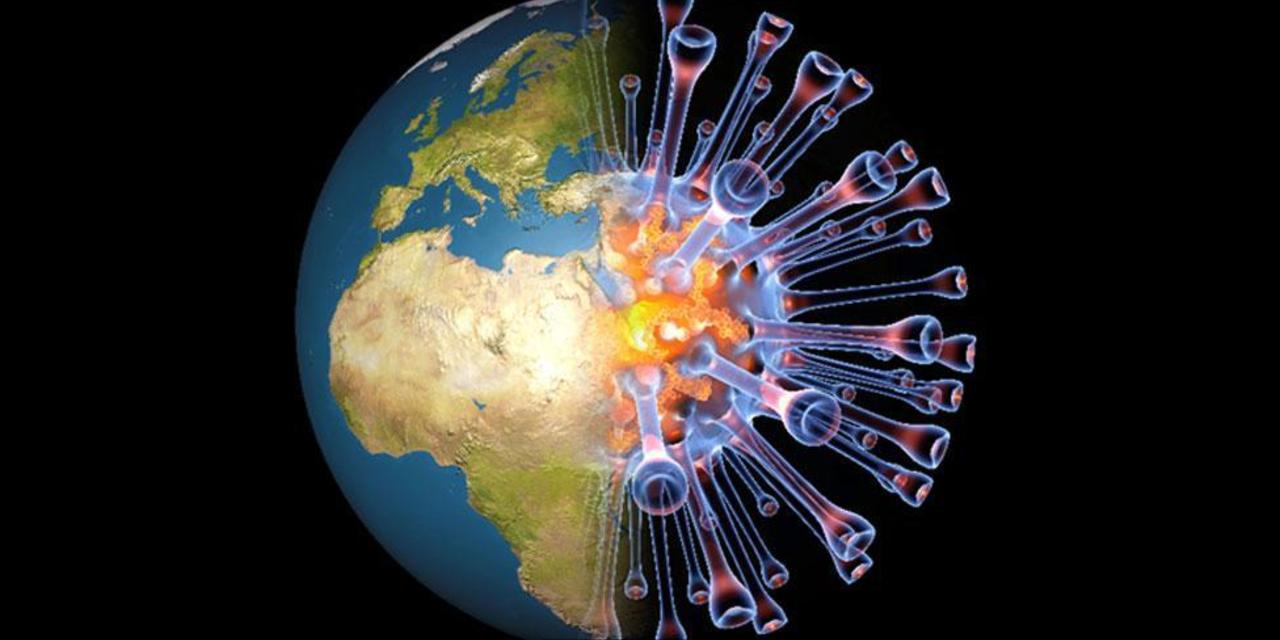
As a result of climate change, population growth, and rising expectations regarding quality of life, energy requirements for cooling processes are growing much faster worldwide than for heating. Another problem that besets today’s refrigeration systems is that most coolants cause environmental and health damage. A novel technology could provide a solution: refrigeration using magnetic materials in magnetic fields.
Slight pressure – big impact
In the next step of the six-step cycle, the researchers removed the cooling element from the magnetic field, which retained its magnetization. In step three, the heat sink comes into contact with goods to be cooled down and absorbs its heat. The alloy even remains magnetic if the material returns to its original temperature. This can be remedied by mechanical pressure: in step four, a roller compresses the shape memory alloy. Under pressure, it switches to its denser, non-magnetic form and heats up in the process. When the pressure is removed in step five, the material retains its state and remains demagnetized. In the final step, the alloy releases heat into the environment until it has returned to its initial temperature and the cooling cycle can recommence.
Using rare earths sparingly
Oliver Gutfleisch is also convinced that the future belongs to solid coolants. “We have been able to show that shape-memory alloys are highly suitable for cooling cycles,” says the functional materials expert: “We need far fewer neodymium magnets but can nevertheless generate stronger fields and a correspondingly greater cooling effect.” By 2022, he intends to build a demonstrator at the TU Darmstadt that makes it possible to estimate both the actual cooling capacity under real-life conditions and the energy efficiency of the process. For this, he has received an ERC Advanced Grant from the European Research Council worth a total of 2.5 million euros over five years.
Learn more: Researchers develop magnetic cooling cycle
The Latest on: Magnetic refrigeration
[google_news title=”” keyword=”magnetic refrigeration” num_posts=”10″ blurb_length=”0″ show_thumb=”left”]
via Google News
The Latest on: Magnetic refrigeration
- Stan Fresh Market is Ripe for the Pickingon May 6, 2024 at 3:00 pm
In front of Main Dining, at the junction between the library, MSR, and the student center, half a dozen students arrange various types of produce on tables, preparing the Stan ...
- The Best MagSafe Chargers for 2024on April 30, 2024 at 5:00 pm
Here's what you need to know about Apple's magnetic charging standard, along with the best ones you can buy. I’m one of PCMag’s mobile analysts. That means I check out phones, hotspots ...
- How Green Technologies Are Reshaping Air Conditioningon April 27, 2024 at 6:51 am
As we grapple with global warming and rising global temperatures, air conditioning is no longer just about comfort but a necessity in many parts of the world. The first modern air conditioning system, ...
- Vietnam Magnetic Refrigeration Market Analysis, Key Segments, Share, Size, Growth Status, and Forecast to 2024 to 2032on April 17, 2024 at 11:43 pm
The Vietnam magnetic refrigeration market is witnessing significant growth, driven by various factors such as increasing demand for energy-efficient cooling solutions, stringent environmental ...
- New molecular compound designed with technological applications at the nanoscaleon April 3, 2024 at 8:31 am
In the field of magnetic refrigeration, the nanocrystals deposited on the semiconductor can be used as surface coolants at cryogenic temperatures, a property of interest to lower the temperature ...
- Advanced magnet technology - Ascend NMR magnetson February 16, 2024 at 2:24 am
In addition to the External Disturbance Suppression (EDS), which offers up to 99% screening efficiency against external magnetic field ... work best with Bruker’s refrigeration equipment ...
- Best Camping Fridge for Your Next Outdoor Adventureon December 20, 2023 at 6:11 pm
The cover plate of the electric cooler adopts a unique magnetic design, which can achieve a very good sealing effect with the rubber ring and provide a good insulation effect to improve the efficiency ...
- The 7 Best Magnetic Lashes of 2024, Tested by Real Peopleon May 3, 2023 at 2:25 pm
If you click on links we provide, we may receive compensation. Learn more. The Kiss Magnetic Eyeliner and Lash Kit is the best we tried Melanie Rud is a freelance beauty writer, editor ...
- magnetic switchon August 1, 2021 at 5:00 pm
These “Void” switches are Hall-effect magnetic levitation numbers devised by keyboard connoisseur and designer [riskable]. Can you imagine how satisfying it is to clack on switches that ...
via Bing News











